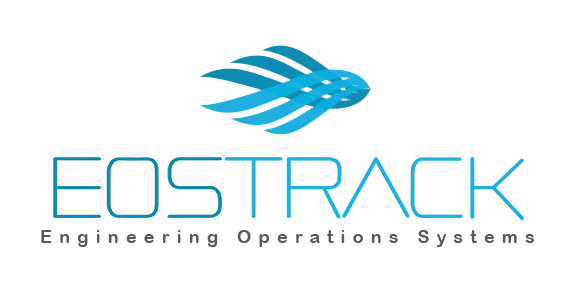CAE Fatigue
Finite Elements tool based on random response and durability simulation
OVERVIEW
CAE Fatigue joins MSC Software family so, this webinar is to introduce you to CAE Fatigue technology and we are also highlighting what's new in 2020 release.
CAE fatigue is a FE-based random response and fatigue solver that has rapidly become the analysis tool of choice for random response and fatigue life calculations for static or dynamic problems in both the time domain and frequency domain.
Testing against repeated loading cycles, sometimes millions of times over, is often too expensive and time consuming to be practical. Finite element analysis programs can tell you where stress “hot spots” exist, but on their own cannot tell you whether those hot spots are critical areas for fatigue failure, when fatigue might become a problem and how to possibly fix those problems.
Many manufacturers simply accept long prototype-development cycles, overweight components, unpredictable warranty claims, and loss of customer confidence.
CAE fatigue enables durability engineers to quickly and accurately predict how long products will last under any combination of time-dependent or frequency-dependent loading conditions.
Benefits include reduced prototype testing, fewer product recalls, lower warranty costs, and increased confidence that your product designs will pass required test schedules.
CAE fatigue also offer the User the ability to calculate random response for displacements, velocities, accelerations, forces and to use that ability to detect “rattle” conditions (i.e. if parts might hit under random loading), to transfer or cascade loading from one area of the model to another and to even develop less complicated surrogate loading that can replace multi inputs with single inputs, which is especially useful for testing components and parts.
The advanced random response and life estimation capability of CAE fatigue allows users to perform comprehensive random response and fatigue analysis with the same FE model setup that is used for stress analysis. The environment seamlessly enables CAE, dynamic analysis, and durability to be managed in one user friendly interface.
CAE FATIGUE - CAPABILITIES
• Processing times are super-fast due to advanced “Running Sum Technology” with no limits on the size of the model being analyzed or loading being applied.
• For a frequency domain analysis, the software can use any number of random loads with or without deterministic loads (i.e. random only, sine-on-random, sine only, sine sweep, harmonic sines, etc.). The software can be used to detect collisions between parts under random loading (Rattle detection), can be used to cascade input loads to other parts for further analysis and can be used to optimize loading to reduce complexity; i.e. reduce a multiple input PSD loading to a single input PSD loading or even a single sine wave.
• For a time domain analysis, the software can do quasi static, full transient or use modal participation factors. Will also support non-linear stress inputs from Nastran and Marc.
• Comes with time signal to PSD conversion toolset (TIME2PSD), which is a powerful conditioning and conversion tool for converting multi-channel, multi event time domain data into a direct and cross PSD matrix of loading.
• Comes with a time signal generation toolset (Load Scheduler) for generating time based loading from existing RPC or CSV files with or without additional loading from block loading, deterministic waves (i.e. sine, square, triangle, sawtooth), sine sweeps, XY pairs, etc. The defined loading can be exported as separate Events in RPC / RSP / CSV / TXT or TABLED1 (BDF) format.
• Can do spot and seam weld analysis in both time domain and frequency domain. Additionally, can do User specified weld shapes in frequency domain.
• Can be used for both high-cycle fatigue and low-cycle fatigue.
• Can be used with both stress life (S-N) and strain life (e-N) material data in the same analysis.
• Comes with modifiable materials database with comprehensive set of S-N, E-N, Cyclic and component curves.
MODULES
CAE fatigue is packaged in 3 configurations that you can choose from based on your analysis needs.
CAE Fatigue TIME
This package is used to calculate static and dynamic time domain durability and fatigue damage using results from Nastran, Ansys and/or Abaqus. This package includes a Graphical User Interface (GUI) for Microsoft Windows™.
This package also includes the Loads Scheduler toolset for graphically developing time-based input loading from block loading, deterministic waves (i.e. sine, square, triangle, sawtooth), sine sweeps, XY pairs, etc.
CAE Fatigue FREQUENCY
This package includes TIME and is used to calculate static and dynamic frequency domain random response and fatigue damage from Base Shake (single input) or Multi input loading using system properties (transfer functions) from a variety of different solvers (e.g. Nastran, Abaqus, Ansys).
This package also includes the TIME2PSD toolset for converting time domain data into frequency domain PSD matrix file.
CAE Fatigue PREMIUM
This package includes FREQUENCY and is used to calculate time and frequency domain random response and fatigue damage. It also includes advanced random outputs like displacements, velocities, accelerations and forces, allows for the use of standalone deterministic loading or mixed deterministic loading with random loading and also allows for the calculation of surrogate loads and the use of spot / seam / User welds in the time domain and frequency domain.

